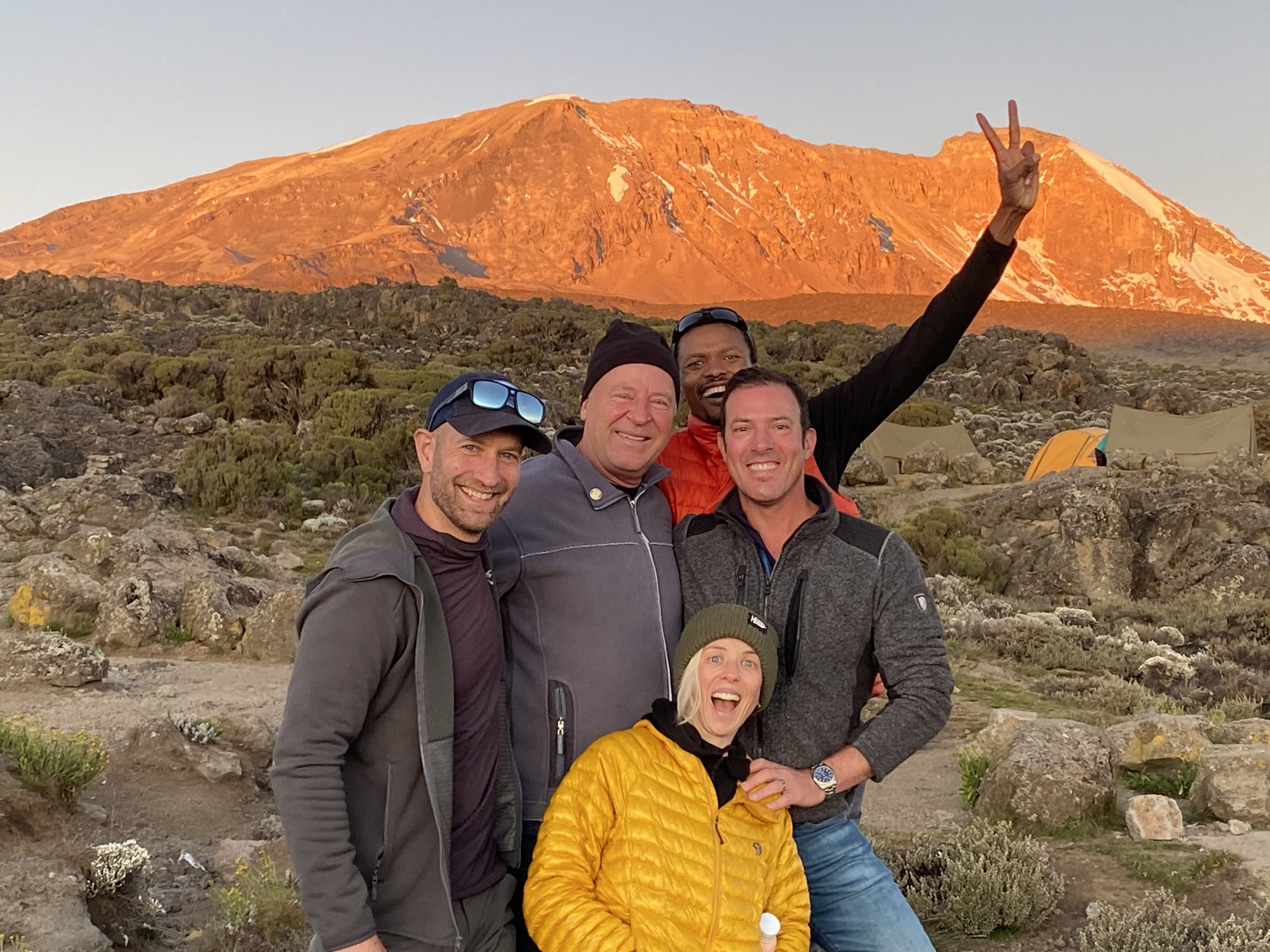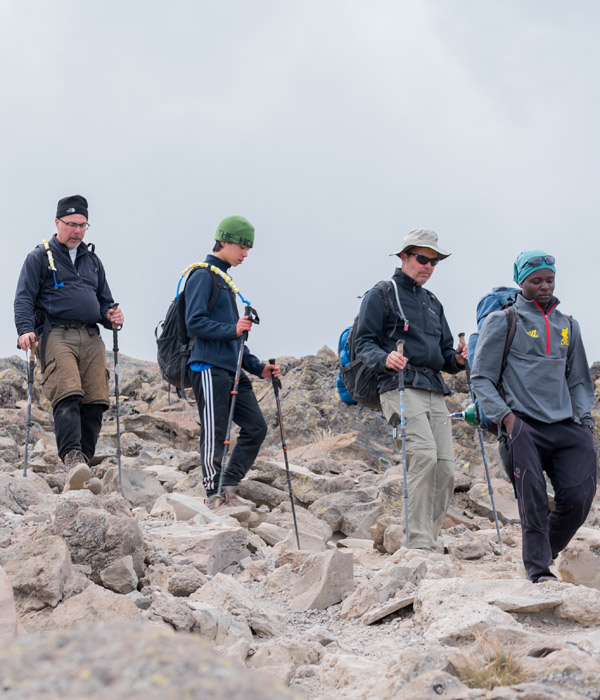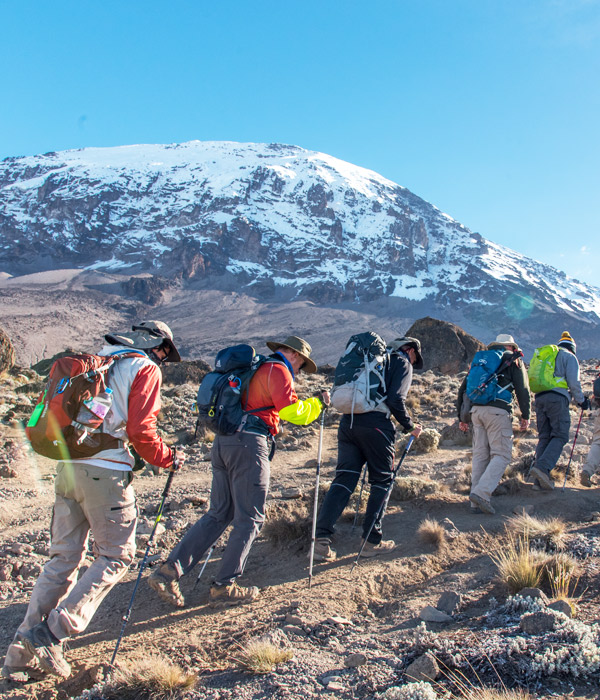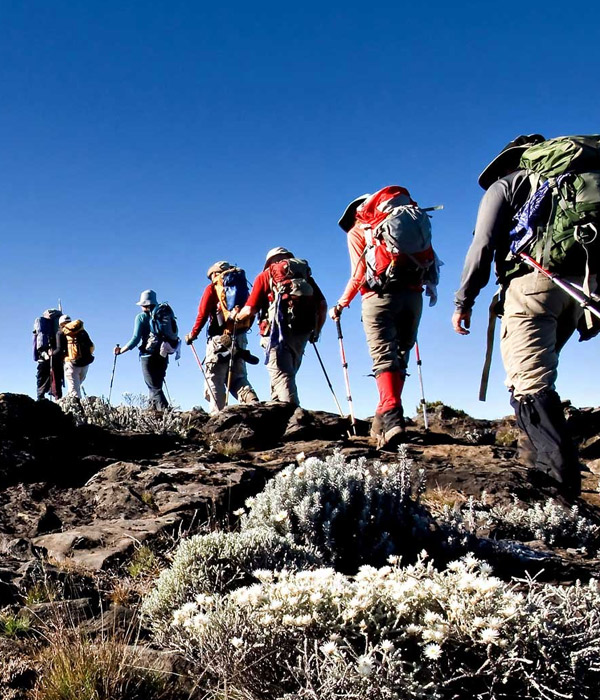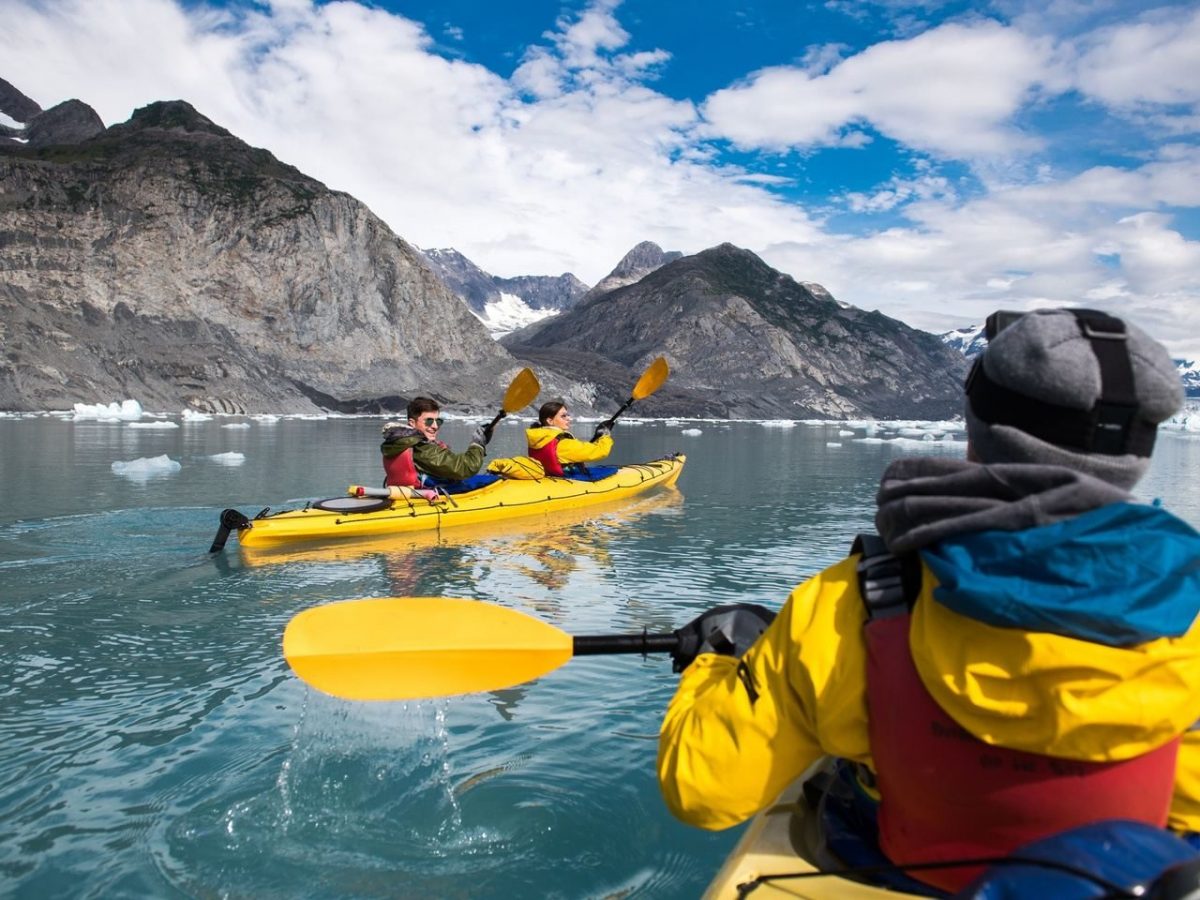Acute Mountain Sickness on Kilimanjaro: An Ultimate Guide
Acute Mountain Sickness (AMS) is a problem you should be aware of if you want to climb Kilimanjaro. A shortage of oxygen at a high altitude causes the body to react badly, which is called AMS. A high altitude is higher than 4,900 feet. The proportion of oxygen in the air does not differ between sea level and high altitudes; it is roughly 21%.
However, because of the decreased air pressure at high altitudes, fewer gases are present overall. There are fewer oxygen molecules present. Although some individuals may experience serious symptoms of altitude sickness as low as 8,000 feet, this is typically not the case until around 12,000 feet.
The body must adapt to having less oxygen because there are about 40% fewer oxygen molecules each breath at 12,000 feet. There is only about half as much oxygen at the top of Kilimanjaro as at sea level.
High Altitude Categories:-
Mountain medicine recognizes three altitude categories:
- High altitude: 4,900 to 11,500 feet above sea level
- Very high altitude: 11,500–18,000 feet above sea level
- Extreme altitude: Exceeding 18,000 feet
High altitude, AMS, and poor performance are frequent in the first group. Low performance, AMS, and very high altitude are anticipated in the second group. Humans can only survive at high altitudes for brief periods after acclimatization. The top of Mount Kilimanjaro is exceptionally high, at 19,340 feet.
Acute Mountain Sickness: What Is Its Cause?
The body’s inability to adjust to the lower oxygen levels at higher elevations causes AMS.
Our bodies react physiologically when there is a lack of oxygen. We respond by exhaling more quickly and deeply. More red blood cells, which transport oxygen throughout the body, are produced. We continue the process as we acclimate to the atmospheric conditions, also referred to as acclimatization.
Four Elements Affect AMS:
- High Altitude
- Fast Rate of Ascent
- High Degree of Exertion
- Dehydration
Going too soon to a high altitude is the leading cause of altitude sickness. Your body will eventually become accustomed to the lower oxygen levels at a certain altitude. Acclimatization is the process, and it typically takes one to three days at any particular altitude.
The body undergoes several modifications to prepare for low oxygen levels, including the following:-
- The level of breathing becomes deeper.
- The body makes extra red blood cells to transport oxygen.
- Increased pulmonary capillary pressure.
- A specific enzyme triggers the release of oxygen from hemoglobin to the body’s tissues, which the body makes more of.
Acute Mountain Sickness: Who Is At Risk?
AMS can be unpredictable though widespread. It is not easy to determine who will or won’t develop AMS unless they are at a high altitude. Age or gender is not the particular characteristic that is related to susceptibility. It’s interesting to note that improved acclimatization does not strongly correlate with superior physical fitness. Genetics appears to be a major factor.
You are more susceptible to experiencing acute mountain sickness if some of the following scenarios apply to you:
- Reside near the water or are not used to being at high altitudes.
- At high heights, elevation is quickly gained.
- When at a high altitude, physically exert yourself.
- Have anemia, which lowers the red blood cell count.
- Have lungs or heart illness.
- Have experienced AMS in the past.
- Take anything that can slow down your breathing, such as sleeping tablets, narcotic painkillers, or tranquilizers.
What Is the Kilimanjaro Protocol for Treating Acute Mountain Sickness?
While climbing Kilimanjaro during the acclimatization process, many people will develop mild AMS. More than 75% of climbers will develop at least a mild AMS case at altitudes exceeding 10,000 feet. After arriving at altitude, the symptoms often begin 12 to 24 hours later and go away within 48 hours. You will have adapted to the current elevation when the symptoms disappear.
The Following Steps Are Recommended For Acclimatization:-
- Breathe in slowly and deeply.
- Use a high-altitude training technique to acclimatize in advance of your trip.
- Sleep low, climb high. Sleep at a lower altitude at night after ascending to a higher height during the day.
- Slightly ascend. Your ascent should be gradual because it takes time to acclimate. Days off will be beneficial.
- Keep your exertion level low. While vigorous exertion may encourage HAPE, mild exercise may aid acclimatization at high altitudes.
- While climbing, make sure you eat enough and drink enough water. You should consume between four and five liters of fluid each day.
- Use the FDA-approved medication Diamox to prevent and treat AMS.
- Avoid using nicotine, alcohol, and other depressants such as opiates, barbiturates, and tranquilizers.
- Avoid ascending higher until your symptoms of moderate altitude sickness subside.
Looking for the best stamped concrete contractors near me? We are excellent stamped concrete contractors who will add excellence to your old spaces.
In general, AMS should be assumed to cause any disease at altitude. Our qualified mountain guides will keep an eye on you the entire ascent. Although we conduct daily health checks to ensure that our clients can climb as securely as possible, there is still a chance of AMS developing and worsening quickly.
The severity of acute mountain sickness affects the type of treatment needed. Simply descending to a lower altitude is the best remedy. However, doing so typically entails quitting the ascent and leaving the mountain. Bottled oxygen also gives to you. Our teams always have emergency oxygen and a foldable stretcher if a rescue is required. Severe AMS cases necessitate hospitalization.
What Are The AMS Symptoms?
The following are signs of mild AMS:
- Headache
- Nausea and vertigo
- Reduced appetite
- Fatigue
- Breathing difficulty
- Sleep disturbances
- Overall unwell feeling
The severity of the symptoms is often worse at night and when the respiratory drive is low. Mild AMS does not hinder regular activity, and symptoms typically disappear as the body gets used to the new environment. Ascent can continue at a moderate rate as long as symptoms are manageable and merely bothersome.
You must inform your hiking companions right away if you experience any disease symptoms.
Moderate AMS Symptoms Include the Following:-
- Severe headache that doesn’t go away with medication
- Nausea and vomiting, growing exhaustion, and sluggishness
- Respiration difficulty
- Reduction in coordination
Regular exercise is challenging, yet the individual can still walk independently. Only sophisticated drugs or a drastic lifestyle change may fix the issue. Before the ataxia progresses to the point where they cannot walk alone, it is crucial to encourage the person to descend.
Going higher in altitude while suffering from severe AMS might be fatal.

The Intensity Of The Symptoms Above Increases With Severe AMS, Including:-
- Breathing difficulty when at rest
- Being unable to walk
- Declining mental health
- Lungs’ ability to retain fluid
A rapid descent of roughly 2,000 ft (600 meters) to a lower altitude is necessary for severe AMS. High Altitude Cerebral Edema and High Altitude Pulmonary Edema are two dangerous diseases connected to severe altitude sickness.
Both occur far less frequently for people who have been adequately acclimated. However, when they do happen, it usually occurs when a person gets too high too quickly or gets very high and stays there. Lack of oxygen causes fluid to flow through capillary walls into the lungs or the brain.
High Altitude Pulmonary Edema or HAPE
The accumulation of fluid in the lungs causes HAPE. This substance hinders efficient oxygen exchange. As the illness worsens, the amount of oxygen in the bloodstream declines, which causes cyanosis, brain damage, and eventual death.
HAPE symptoms include:-
- Breathing difficulty when at rest
- Chest constriction
- A persistent cough that produces a frothy, white, or watery fluid
- Marked weakness and weariness
- A nighttime sensation of impending asphyxia
- Irrational behavior and confusion
High Altitude Cerebral Edema or HACE
The enlargement of brain tissue causes HACE as a result of fluid leaking. Blood and oxygen flow to the brain can be restricted by cerebral edema.
HACE symptoms consist of:
- Headache
- Weakness
- Disorientation
- Coma
- Reduced coordination and consciousness levels
- Memory decline
- Psychotic conduct and hallucinations
The condition is quickly lethal if the affected person doesn’t immediately descend. Every HACE patient needs to be transported to a hospital for further care.
Best Route To Climb Kilimanjaro
Kilimanjaro is a challenging mountain with many different routes to choose from. But, with Good Earth
Expedition, your difficult route can be easy and enjoyable!
Best Place Destinations
We provide some very affordable prices compared to others.

